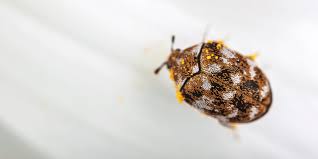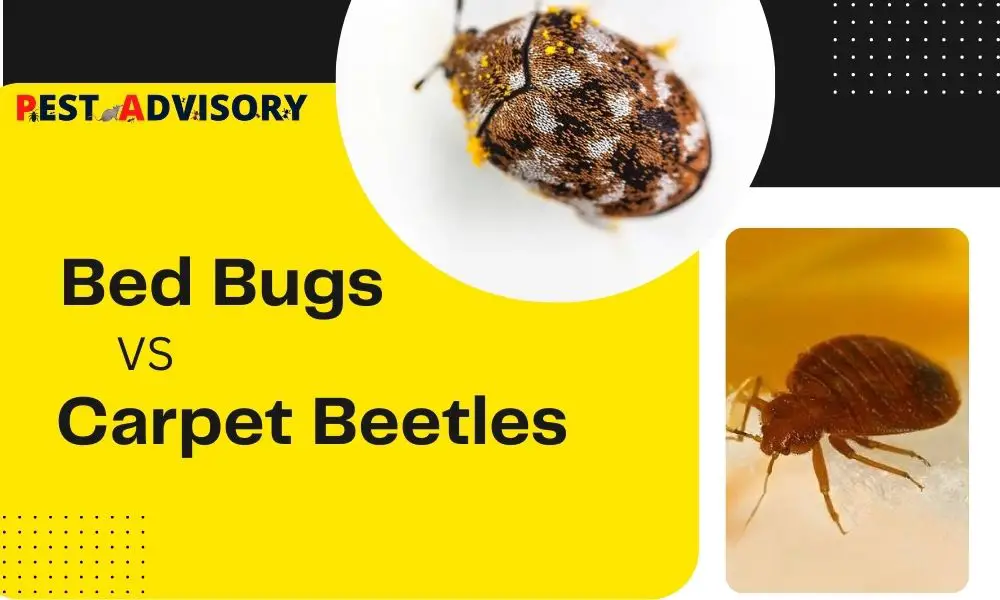One of the insects most commonly confused with bed bugs is the equally small and flat, carpet beetle. Both these insects are very common in homes and properties, and their infestation is often commonly confused.
If you spot a carpet beetle and think that there is a bed bug infestation in your home, you’re surely going for the wrong treatment and prevention. So, it is vital to know the difference between these two kinds of pests, so that you can take the right measures.
In this article, we will tell you about the differences between these pests and how you can identify them. We will take a look at the causes of infestation and what can you do to get rid of them.
Important Note: If you're tired of pests and want a reliable solution, then you should definitely consider seeking help from a professional pest control company. DIY solutions can be effective, but if you're dealing with a significant pest infestation, you don't want to rely solely on DIY methods. Pest control companies typically don't charge huge fees. You can fill out this form to receive free quotes from the top local pest control companies, and compare the quotes and see for yourself. Then, finally, your pest problems will be eliminated for good.
The Difference Between Bed Bugs and Carpet Beetles
We agree that both these insects are annoying and tough to get rid of. But your task will become even more difficult if you don’t know which pest you are dealing with! So, here are some differences that can help you identify.
Size
Bed bugs are longer and wider than carpet beetles. Bed bugs are about 5-7 mm long in any stage of their life, which is about the size of an apple seed. Carpet beetles are shorter, about 3 mm long.
Appearance
Although both these insects look similar, we will tell you some distinctive features of their appearance. The main difference between bed bugs and carpet beetles is their color.
Bed bugs are small, oval-shaped, and reddish-brown while carpet beetles can be black, brown, white, or orange with a mottled pattern on them.
The second major difference is that bed bugs do not have wings and cannot fly at any stage of their life, but carpet beetles possess wings and can fly to new locations.
Habitat
Bed bugs prefer living near their food source, in mattresses, couches, sofas, or carpets. Carpet beetles can live anywhere their food source exists, such as homes, warehouses, museums, or even outdoors.
Habits
In case of a bug infestation, you will notice shed skins, fecal matter, and blood spots that the bed bugs leave behind. They prefer to feed at night when we are fast asleep and are most active an hour before dawn.
The larvae of carpet beetles chew holes in the infested items and also leave behind their shed skins. Carpet beetles feed on the carpet, wool, and other natural materials, unlike bed bugs.
Bites
The most significant difference between these two pests is that carpet beetles DO NOT bite, while bed bugs do! Bed bugs feed on your blood, they bite us at night to draw the blood from us and leave marks of noticeable bites behind.
Carpet beetles can leave marks on your body, but they do not bite. The larvae of carpet beetles have spooky hair which may cause redness. Allergies to these insects may result in bite-like symptoms. Since carpet beetles eat organic matter, they do not need to bite us.
Signs of Carpet Beetles vs. Bed Bugs
Here are the most common early signs of carpet beetle and bed bug infestation.
Signs of Carpet Beetles
- You may spot a live carpet beetle flying or climbing walls.
- Carpet beetles feed on fabric, so you may notice damaged carpets, rugs, upholstery, or clothing.
- You may find the skin shed off the larvae.
- You can look out for dead beetles on the windowsill.

Signs of Bed Bugs
- You may notice bites on the upper half of your body when you wake up.
- It is common to spot blood stains on sheets or pillowcases if your home is infested.
- You may spot rusty stains on the bed, furniture, and walls because bed bugs leave their feces behind.
- Small white dots may be present on your furniture and the corners of your bed. These are bed bug eggs.
- You may experience a musty odor.
How Can You Get Carpet Beetles and Bed Bugs?
Both bed bugs and carpet beetles can travel in similar ways. Both these pests will hitch-hike a ride on your clothing, luggage, or bag and get inside your home.
Bed bugs usually stick themselves to any object like luggage, bags, clothes, or sometimes even you, to get inside your home as uninvited guests. Once they are inside the home, they can crawl from room to room and place to place in search of a food source.
In this way, they infest not only your home but also other places you might travel to, like hotels or lodges.
Carpet beetles also use a similar mechanism of hitch-hiking, they grab onto your belongings and enter your home unknowingly. Inside your home, they can fly, even to nearby places, or climb walls to travel. They lay eggs near carpets and blankets in your home to multiply.
How to Get Rid of Carpet Beetles and Bed Bugs?
Now that you know what kind of infestation you are facing, it is essential to know the right treatment for it. Both these infestations are treated by different methods.
Ways to Treat a Bed Bug Infestation
Bed bugs hate extreme hot or cold temperatures. So, you can steam your home to kill bed bugs from heat and simultaneously freeze any belongings that are infested for at least 4-5 days. You can steam your house once a week to make sure that the process is effective.
You may use rubbing alcohol on any live bed bugs you encounter or spray it on your clothes if they are infested. You can use powdered diatomaceous earth and sprinkle it in the affected areas of your home.
Ways to Treat a Carpet Beetle Infestation
Getting rid of carpet beetles is an easier task than eliminating bed bugs as carpet beetles do not hide and can be easily spotted.
To eliminate them, vacuum your carpet, rugs, blankets, and curtains thoroughly, and dispose of the vacuum bag in an outside trash can to prevent them from coming back. Repeat this process daily for a week.
If these bugs are present in your clothes, launder the clothes at a high temperature. You can also set chemical traps to kill them.
In either case, if things get out of hand, the best option is to call an exterminator for help.
Final Thoughts
Both these infestations are serious problems and can even lead to mental or physical issues. We have discussed everything from signs of infestation to their treatment and distinctions. So, once you identify, start the treatment as soon as possible.
Both these bugs can be difficult to find and eradicate, but we hope this article has helped you in this journey! We wish you all the best!

